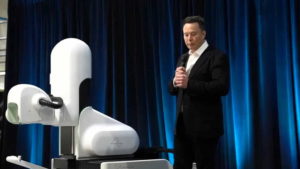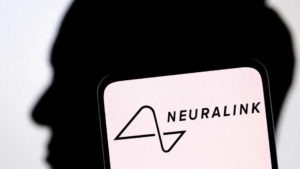Neuralink and other brain-computer interface (BCI) technologies seek to establish a direct connection between the human brain and computers. Exciting news has surfaced recently that suggests Neuralink is making strides in eyesight restoration.
Elon Musk launched Neuralink, a business that has been developing a unique implantable brain device. With this brain-chip technology, the brain may now directly interface with computers or other devices due to this gadget, which functions like a miniature computer.
Imagine, now, that someone has lost their sight as a result of a disease or injury. Neuralink’s technology possibly will allow them to partially restore their vision. Signals from the eyes might be picked up by the brain-implanted device and sent to a computer in this medical technology.
After the computer has processed these data, the brain is stimulated in a way that results in the perception of vision.
Many people who are blind or visually impaired may be able to see again, or at least be able to recognize shapes and movement, due to this innovation. Furthermore, it’s crucial to remember that this brain-chip technology is still in its infancy and that much more investigation and testing are required before it is made broadly accessible.
Brain-computer interface: The Statement of Elon Musk

Elon Musk‘s comments came after Neuralink revealed that their first patient had received an implant in January and had shown off the aptitude of brain-chip technology to play chess in a nine-minute live feed. Neuralink aims to connect computers to human brains to treat difficult neurological diseases.
About the objective of sight restoration, Musk stated that at first the resolution might be similar to early Nintendo graphics but could eventually be higher than normal human vision.
All things considered, Neuralink’s success in using brain and computer interface technology to restore vision is a promising development in the field of neuroscience and may have profound effects on the lives of those who are blind.
According to Tesla’s chief Neuralink’s technique has effectively given monkeys their vision back. This is a noteworthy finding since it shows that non-human primates can benefit from the brain-chip technology.
Furthermore, in a prior demonstration, Neuralink showed how a paralyzed person could control a computer cursor and interact with an interface using their brain-computer interface.

This is a reference to a particular kind of brain implant that Neuralink created to recover vision. The phenomenon known as blindsight generally describes the ability of people with damage to their visual cortex to react automatically to visual inputs.
Elon Musk also revealed that Neuralink, his company, had made significant progress in connecting cutting-edge brain-chip technology. The principal aim of Neuralink is to facilitate the interaction of computers and human brains to treat complicated neurological disorders.
Elon Musk, the CEO of SpaceX and Tesla, made a noteworthy statement about the Brain-computer interface and his business Neuralink’s capacity to use brain chip technology to let blind monkeys see again as,
“Neuralink’s brain chip technology, called Blindsight, had been successful in enabling blind monkeys to see. The restored vision will initially have limited resolution like early Nintendo graphics but hopefully, it will eventually be able to meet the capabilities of the human eye. No monkey had perished or had catastrophic injuries as a result of using a Neuralink device brain-chip technology.”
The prospective developments in neural technology and their consequences for medical technology and applications specifically, the restoration of sensory functions are highlighted in this announcement.
The United States Food and Drug Administration (FDA) approved Neuralink’s first study in May of the previous year. In this experiment, 64 flexible threads are inserted into the part of the brain that regulates the intention behind an action. These threads are fragile, thus robotic help is needed during insertion.
After the threads are positioned, they make it easier for brain signals to be recorded and sent to the appropriate software, which then decodes the user’s intended actions. The implant of the Brain-computer interface is further powered by a wirelessly rechargeable battery.
Nevertheless, this innovative breakthrough in brain-chip technology is a major step forward for neuroscience and might completely change how diseases involving the nervous system and motor function are treated.
Such technology has the potential to improve the quality of life for those with neurological problems and may open the door for future advancements in brain-computer interface technology with more study and development.













